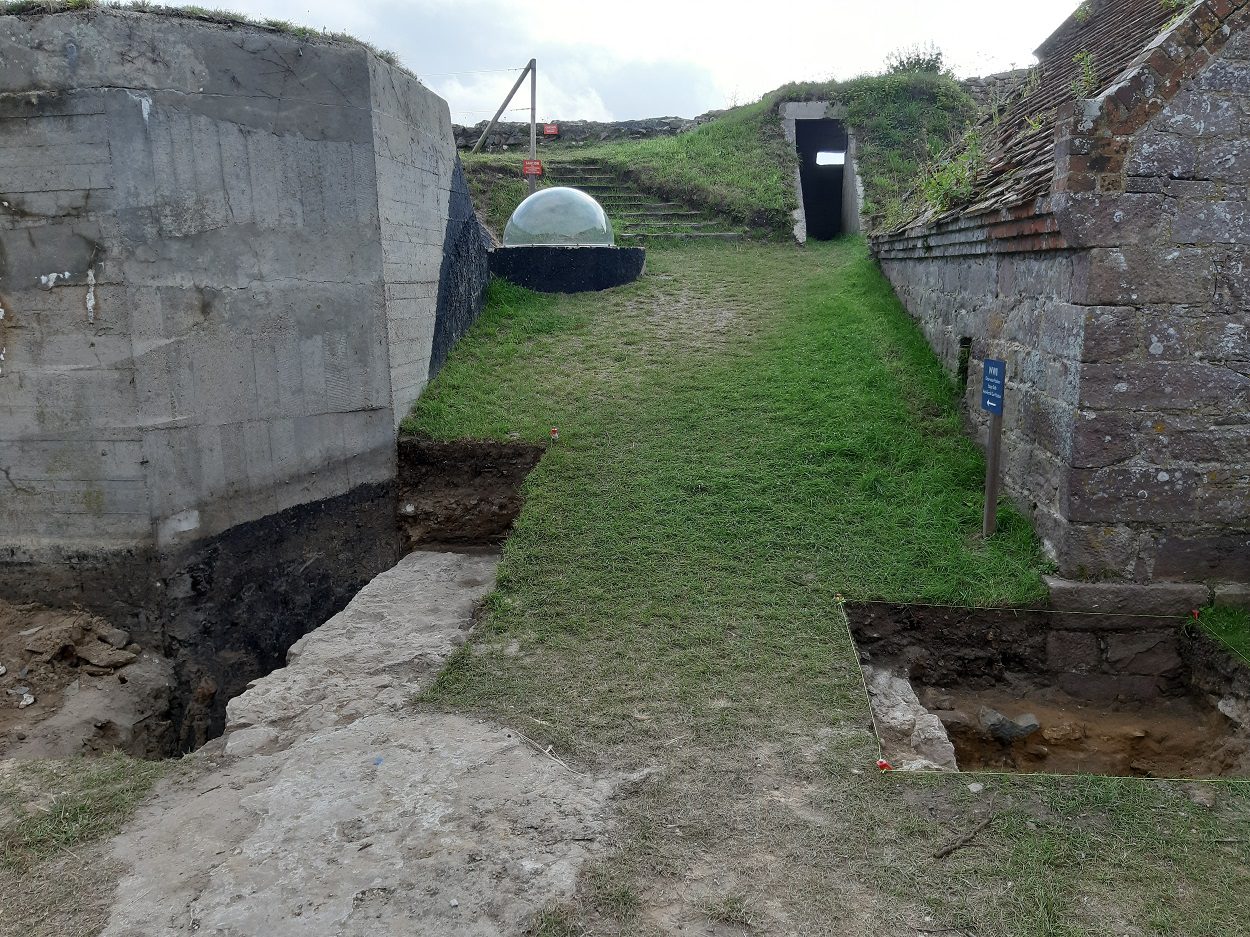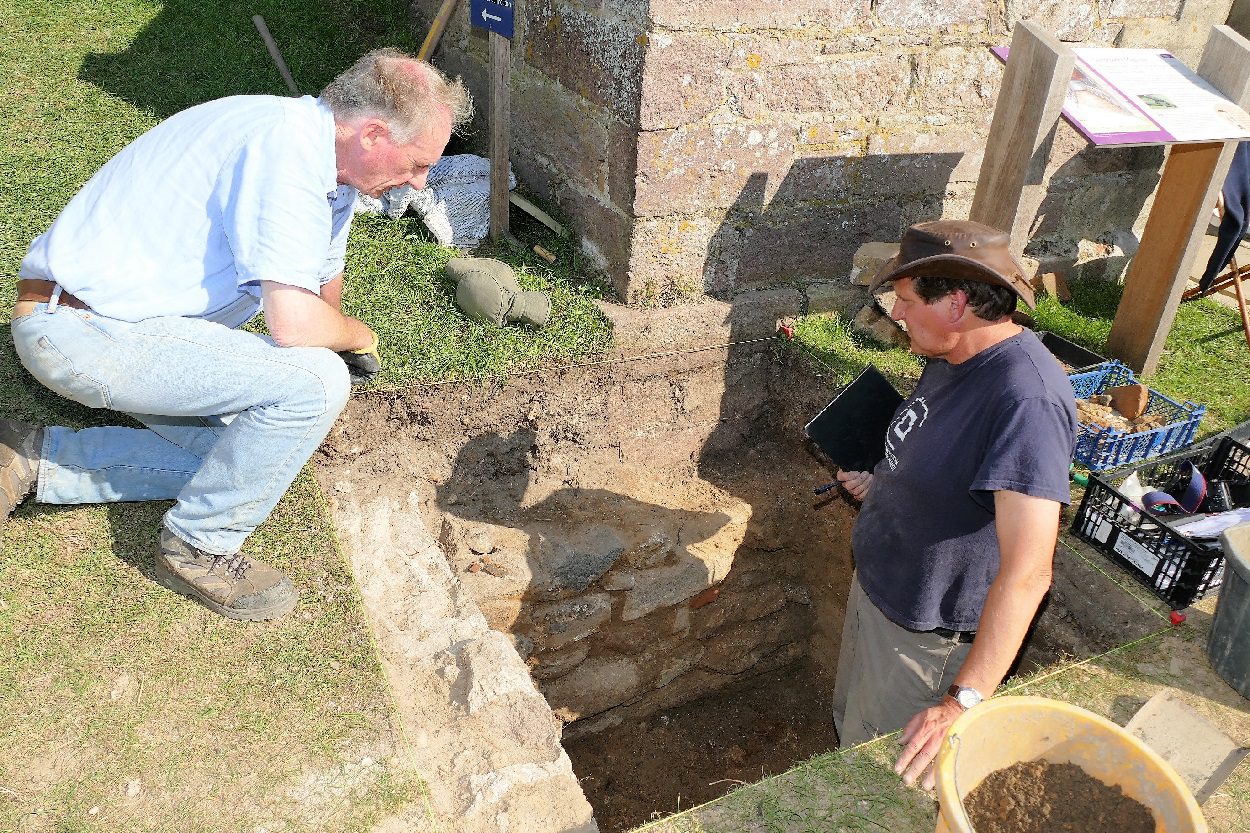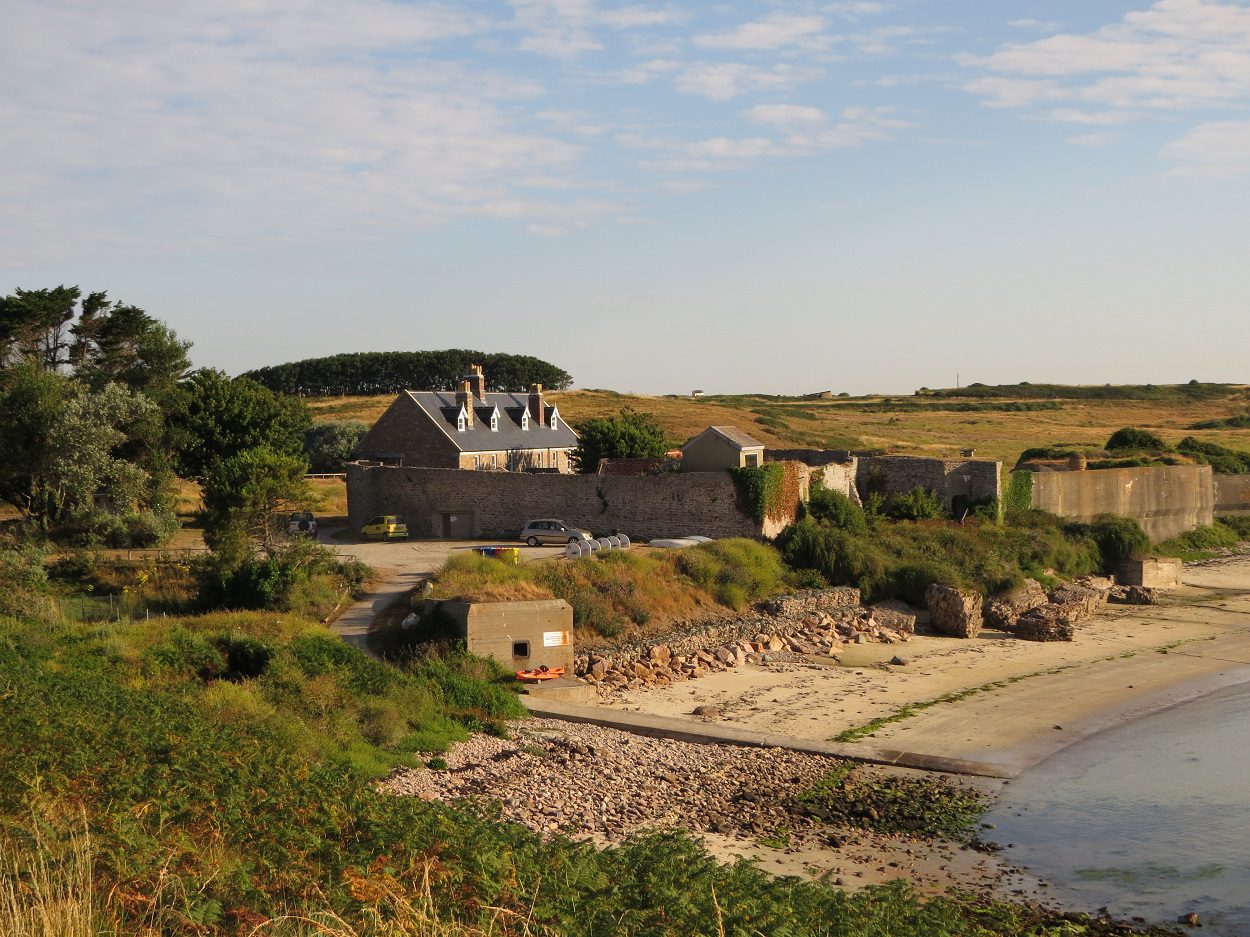An excavation of Alderney’s Roman fort, also known as the Nunnery, has revealed new insights into the 1,700-year-old history of the site.
The Nunnery was only recently identified as a Roman fort, despite the site being used during the medieval period as a barracks, a governor’s house in the Tudor period, and by German forces during the occupation of Alderney in WW2.
The latest excavation works was conducted by Dig Alderney and the Guernsey Museum Archaeology Group, in conjunction with volunteers from both Alderney and Guernsey to understand the complex multi-period history of the fort.
Dr Jason Monaghan said: ‘We confirmed that the Roman tower walls had been levelled-off, probably by British engineers refurbishing the fort around 1793. The Germans inserted their Type 501 bunker neatly into the tower ruins, using the north and south internal walls effectively as shuttering to pour their concrete. Unfortunately, they dug out the entire interior of the tower to do this, destroying any evidence for internal structures or floors.”

Archaeologists were able to expose both the inner and outer faces of the south tower wall down to the top of the foundations, confirming the wall was 2.8 metres thick (around 10 Roman feet) and still standing a metre above its foundations.
After many years of study, the Roman courtyard was also exposed over a metre beneath the ground level, consisting of a double layer of flagstones embedded in clay, and in one place also capped by mortar.

Two trenches found the remains of ‘Building D’ which could be part of the Tudor governor of Alderney’s house. It was built over the Roman courtyard and used the Roman tower for its north wall. The 1793 powder magazine was built on top of it, and again the interior of the building was largely dug out when the magazine was built leaving only a small triangle of a cobbled floor. The walls had been plastered both inside and out. More plaster was found at the base of the so-called ‘gun ramp’ suggesting that originally the lower parts of this had been the south wall of the building.
Dig Alderney had permission to excavate four areas, but planned to excavate just two of the areas during the 2021 season. The team plans to return in Spring 2022, aiming to answer outstanding questions about the medieval and Tudor history of the site.
Header Image Credit : Dig Alderney





